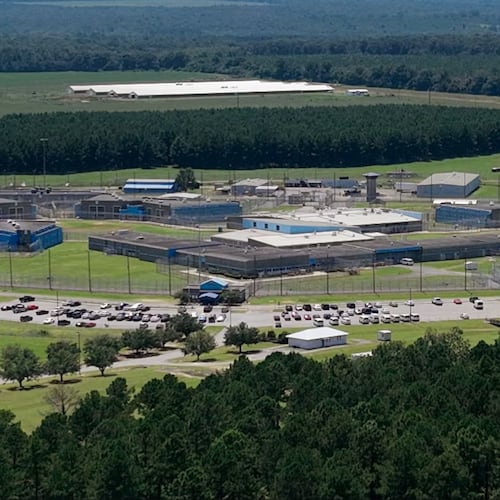In the spring of 2017, a boldly subtitled book became a national bestseller. “Drawdown,” wrote the authors, was “the most comprehensive plan ever proposed to reverse global warming.” The book, an extensive examination of 100 solutions that could substantially reduce greenhouse gases over the next three decades, has influenced communities, curriculum and conversations about climate change.
Inspired by the global endeavor, the Ray C. Anderson Foundation in October launched Drawdown Georgia, an effort to bring a local lens to those climate solutions and reduce Georgia’s carbon impact by one-third in 10 years.
“The one thing Project Drawdown couldn’t do was tell any region what their solutions could be,” said John Lanier, executive director of the foundation, which provides funding and research that supports environmental efforts. So for 18 months, a team of experts from the University of Georgia, Georgia Institute of Technology, Emory University and other organizations worked to determine which solutions were best suited to Georgia’s unique landscape.
The resulting 20 solutions, if widely adopted, could help Georgia reduce its annual carbon output by 35% over the next 10 years and serve as a model for other states to do the same.
“Georgia has regions that span conditions in most states in the U.S. There is something for everybody to be able to learn from,” said Marilyn Brown, a professor at Georgia Tech and principal investigator for Drawdown Georgia’s research team. “Georgia has the aspiration of being a leader in this.”
Despite the book’s success, drawdown is a word that hasn’t edged into mainstream usage. The term refers to how we can reduce the amount of greenhouse gases in the atmosphere. Though carbon dioxide is often the focus of these efforts, greenhouse gases also include methane, nitrogen oxide or any other gas that traps heat in the planet’s atmosphere, making it warmer than it would be otherwise.
When looking for solutions in Georgia, researchers first eliminated any that didn’t apply, such as tropical rainforests, then focused on building a body of data that would help them understand each solution’s potential across the state. The resulting 20 solutions for Georgia span five categories: electricity, food and agriculture, transportation, land sinks (ocean and land-based ecosystems that remove greenhouse gases from the atmosphere) and buildings and materials.
Electricity and transportation are Georgia’s greatest opportunity areas, and some of the solutions are already underway in the state, including rooftop and large-scale solar installations. “I have always known that solar energy in Georgia was appealing for generating electricity from large-scale solar farms or solar rooftop, but I did not fully appreciate the magnitude of its potential contribution,” Brown said.
Achieving the desired greenhouse gas reduction from rooftop solar installations would require 295,000 homes to install new 5-kilowatt solar systems. For large-scale solar, meeting the goals would mean adding 10 solar farms with 100 megawatts of power and 36 community solar systems with 5 megawatts of power.
In the transportation category, Brown was surprised that alternative mobility (biking, walking, teleworking) surfaced as a high-impact solution in Georgia, one that could reduce emissions by 1 million metric tons if 2.5% of car trips are eliminated by 2030.
Vehicles accounted for 43% of the state’s carbon dioxide emissions in 2017, and the greatest gains in the category would come from reducing diesel fuel use in the 4 million registered medium- and heavy-duty trucks in Georgia. A 10% reduction in diesel fuel would reduce emissions by 1 million metric tons by 2030.
With more than 2 million tons of food wasted in Georgia every year, reducing that waste is a primary target under the food and agriculture banner. When food waste and other organic matter go to a landfill, they decompose and release methane gas. Composting, another way to cut down on food waste, is also considered a solution for Georgia.
Georgia’s forests already offset about 27% of emissions in the state, but further preserving and increasing the forests and wetlands across the state can also help reach the goals of Drawdown Georgia.
Completing the research was just the first phase, Lanier said. The next step is turning it into a movement that is embraced statewide. “We want this movement to be people as diverse as peanut farmers in South Georgia to midlevel managers at corporations in Atlanta to pastors at churches,” he said.
They have already begun collaborating informally with organizations such as the Georgia Forestry Association and Georgia Interfaith Power and Light. Earlier this month, they began appointing a leadership council to help build additional collaborations.
Researchers plan to measure program success across the 20 solutions, and within a year, they plan to develop a carbon scorecard for Georgia’s cities and 159 counties that will help publicly identify each county’s carbon footprint. Does one county have a large industrial base? Does another have heavy dependence on gas power vehicles? Where are the solar farms and rooftop installations? Where are forest protection programs stronger? “Counties and metro areas know generically or in some broad sense about their carbon emitters but they possibly ... never thought to add it up and compare with their neighbors,” Brown said.
While Lanier acknowledges the role policy will play in the ability to scale many of the Drawdown Georgia solutions, he hopes the effort begins from the ground up. “A year from now, I hope that we see this movement we are trying to create begin to scale organically,” he said. “People will start to know about it, even if they don’t know about the Ray C. Anderson Foundation.”
About the Author
Keep Reading
The Latest
Featured



